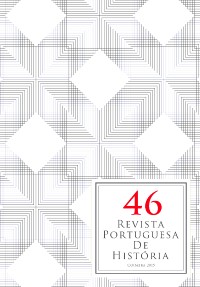Please use this identifier to cite or link to this item:
https://hdl.handle.net/10316.2/38192| DC Field | Value | Language |
|---|---|---|
| dc.contributor.author | Pereira, Hugo Silveira | - |
| dc.date.accessioned | 2015-12-07T11:05:25Z | |
| dc.date.accessioned | 2020-10-05T00:48:15Z | - |
| dc.date.available | 2015-12-07T11:05:25Z | |
| dc.date.available | 2020-10-05T00:48:15Z | - |
| dc.date.issued | 2015 | - |
| dc.identifier.issn | 0870-4147 | - |
| dc.identifier.issn | 2183-3796 (digital) | - |
| dc.identifier.uri | https://hdl.handle.net/10316.2/38192 | - |
| dc.description.abstract | Na década de 1870 Portugal procurou implementar nas colónias a mesma política de obras públicas que vinha praticando na metrópole. Goa era um dos domínios mais longínquos do império ultramarino mas cuja distância a Portugal Continental tinha diminuído com a abertura do canal do Suez (1869). Nos finais da década de 1870 um conjunto de causas sentou negociadores portugueses e britânicos à mesma mesa para negociar um tratado que regulasse as relações entre os dois países na península indiana. O tratado foi assinado em 1878 e previa a construção de um caminho-de-ferro entre o porto de Mormugão (Goa) e a rede férrea britânica. Neste artigo iremos analisar o processo de decisão, a construção e as consequências da instalação daquela infraestrutura naquela colónia portuguesa. Usaremos para tal os conceitos de technopolitics e cross-borders e recorreremos a fontes tão diversas como a correspondência mantida entre os negociadores luso-britânicos, os debates parlamentares mantidos à época e as estatísticas oficiais da exploração de caminhosde- ferro ultramarinos do ministério da marinha e ultramar. | por |
| dc.description.abstract | In the 1870s Portugal tried to implement in its colonies the same public works programme that it had been practising in its mainland territory. Goa was one of the farthest domains of the Portuguese empire even though that distance was shortened with the opening of the Suez Canal (1869). In the late 1870s an array of causes brought together Portuguese and British negotiators to write down a treaty that settled the relations between both nations in the Indian peninsula. The treaty was signed in 1878 and it stated that a railway between the harbour of Mormugão (Goa) and the British rail network was to be built. In this paper we aim to analyse the decision making process, the construction and the consequences of the opening of that railroad in that Portuguese colony. To do so we will use the concepts of technopolitics and cross-borders and we will read on sources as diverse as the correspondence between Portuguese and British negotiators, the parliamentary debates, and the official statistics of the operation of overseas railways compiled by the ministry of Marine and Overseas. | eng |
| dc.language.iso | por | - |
| dc.publisher | Imprensa da Universidade de Coimbra | - |
| dc.rights | open access | - |
| dc.subject | Mormugão | eng |
| dc.subject | Goa | eng |
| dc.subject | India | eng |
| dc.subject | Railways | eng |
| dc.subject | Technopolitics | eng |
| dc.subject | Mormugão | por |
| dc.subject | Goa | por |
| dc.subject | Índia | por |
| dc.subject | Caminhos-de-ferro | por |
| dc.subject | Technopolitics | por |
| dc.title | Fontismo na Índia portuguesa: o caminho-de-ferro de Mormugão | por |
| dc.title.alternative | “Fontismo” in portuguese India: the Mormugão railway (1878-1902) | por |
| dc.type | article | - |
| uc.publication.collection | Revista Portuguesa de História nº 46 | - |
| uc.publication.firstPage | 237 | - |
| uc.publication.issue | 46 | - |
| uc.publication.lastPage | 262 | - |
| uc.publication.location | Coimbra | - |
| uc.publication.journalTitle | Revista Portuguesa de História | - |
| dc.identifier.doi | 10.14195/0870-4147_46_13 | - |
| uc.publication.section | Marcas da presença portuguesa no império | - |
| uc.publication.orderno | 15 | - |
| uc.publication.area | Artes e Humanidades | - |
| uc.publication.manifest | https://dl.uc.pt/json/iiif/10316.2/38192/269291/manifest?manifest=/json/iiif/10316.2/38192/269291/manifest | - |
| uc.publication.thumbnail | https://dl.uc.pt/retrieve/12148957 | - |
| item.grantfulltext | open | - |
| item.fulltext | With Fulltext | - |
| Appears in Collections: | Revista Portuguesa de História | |
Files in This Item:
| File | Description | Size | Format | |
|---|---|---|---|---|
| fontismo_na_india_portuguesa.pdf | 4.44 MB | Adobe PDF |  |
Items in DSpace are protected by copyright, with all rights reserved, unless otherwise indicated.
